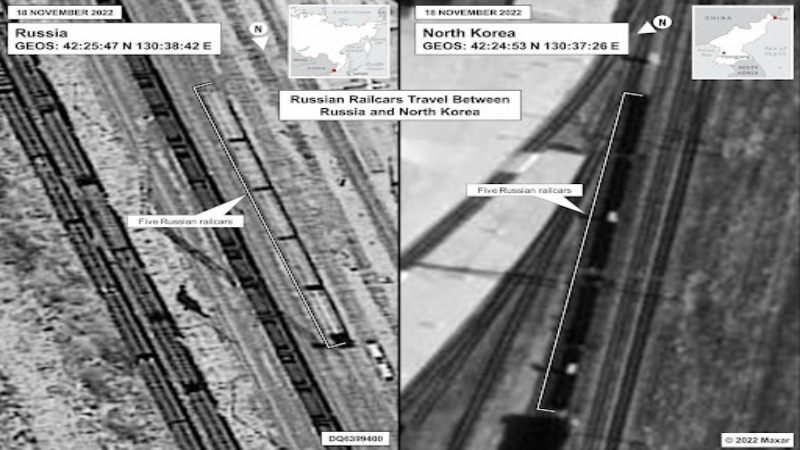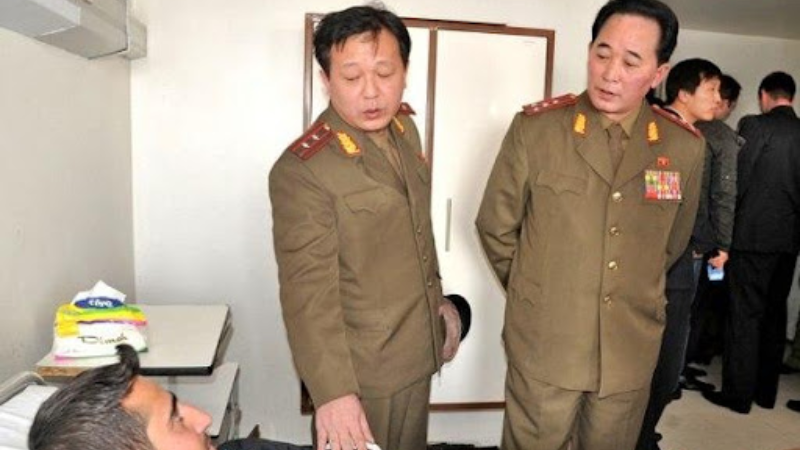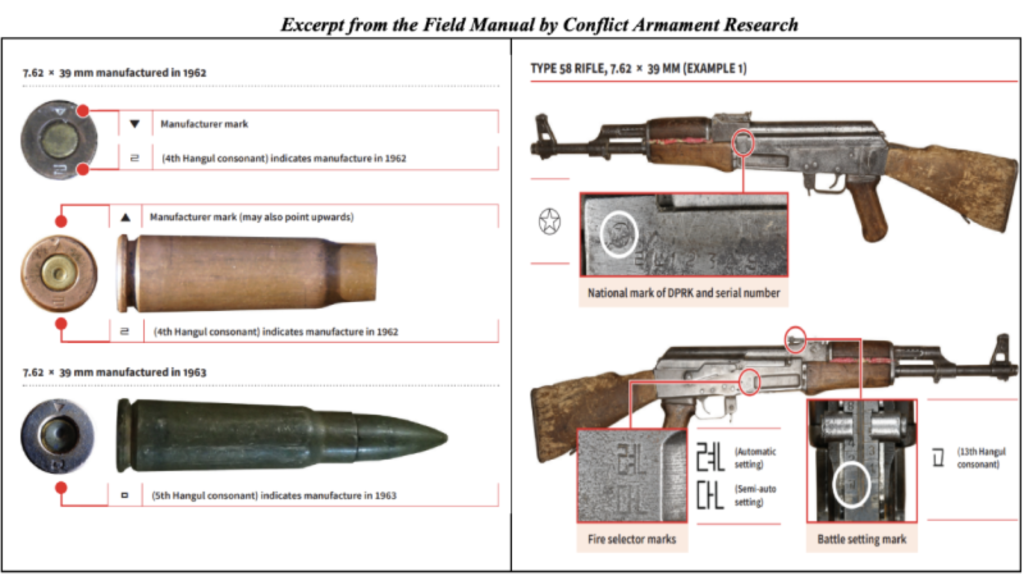
Analysis: North Korea is Aiding the Russia-Ukraine War via Arms Trade
By Jong Min Lee, MALD 2024 Candidate, The Fletcher School
Overview of the Situation
In March 2023, the U.S. Department of Treasury put the Slovakian arms dealer named Ashot Mkrtychev and three of his corporate entities located in Kazakhstan and Russia on the list of the Office of Foreign Asset Control for violation of North Korea sanctions regulations. According to U.S. government reports, Mkrtychev orchestrated arms deals between Russia and North Korea. In January 2023, the White House presented imagery evidence in which Russian cargo trains traveled between Russia and North Korea.

In July, the Financial Times reported that the Ukrainian military utilized seized North Korean 122mm rocket ammunition that was intended to be transported to Russia for their BM-21s Grads to target the Russian troops. They were similar types of ammunition to those that North Korea had allegedly exported to Sudan in late April. With these multiple reports, it has become an open secret that North Korea has some logistical presence in the ongoing Russia-Ukraine war. Although it may seem like a surprise that Russia has been procuring weapons and ammunition from North Korea, this was actually foreseeable considering the long history of North Korea’s state-led illicit arms trade and Russia’s need for Soviet-styled weaponry.
As a hermit kingdom in East Asia, North Korea is notorious for its involvement in the international illicit arms trafficking networks that bypass UN Security Council sanctions. According to the United Nations Security Council Report on the Korea Mining and Development Trading Company (KOMID) and its subsidiary proxy cells, North Korean state-owned enterprises have been known to play a major role in North Korea’s arms sales in global conflicts. Given the murky nature of Sino-North Korean relations, current developments make it evident that the Kim regime wants to take advantage of the present geopolitical conditions for its own interest.
Geopolitical Synopsis and North Korea-Russia Relations
“Never Trust China.” – Kim Il Sung
Contrary to the general misconception that North Korea is a satellite state of China, North Korea has historically been deeply concerned about the increasing economic influence of China. North Korea’s founder and dictator Kim Il Sung emphasized the importance of independence from Chinese influence, and his perspective has been passed down through the past three generations. The mistrust between China and North Korea was most evident during Kim Jong-un’s rise to power in 2011. He executed his pro-China uncle, Jang Song-thaek, and other pro-China political figures in 2013, which in turn allegedly resulted in the purge of the Former Senior Chinese Ministry of Public Safety official, Zhou Yongkang, on charges of violating national security and corruption.
Given the high-risk geopolitical landscape of the region and the recent rise of ethnic nationalism in China, North Korea wants to utilize Russia to its advantage. The recent tensions in the South China Sea have probably also demonstrated the technological capabilities of the Chinese military. North Korea’s profound interest and trust in Russian military technology is also shown by the 1995 incident in which Russian intelligence apprehended 27-year-old North Korean operative, Han Chang-Gil, over his attempt to procure Russian APS rifles in Vladivostok.
Keeping these factors in mind, the mention of highly advanced missile and satellite technologies during the recent Kim-Putin summit was predictable. However, as shown in the previous patterns of North Korean arms exports, the procurement of such technologies could also endanger international security. Like the North Korean missiles, these technologies could also spill over to Iran and the Middle East.
Background on North Korea’s Arms Trafficking
Throughout the Cold War, North Korea consistently involved itself in major conflicts as a pivotal ally of the Warsaw Treaty Organization. In most of those cases, its engagement took the form of sending unofficial military advisors and pilots to various proxy wars, like the Vietnam War, along with spreading anti-colonialism rhetoric in the post-colonial Middle East and African countries. However, according to the Defense Intelligence Agency in 1991, its arms sales increased during the Iran-Iraq War of 1980. It has been reported that when North Korea’s arms sales peaked in 1982, 37% of its total exports were from selling weapons. The North Korean regime has used illicit arms trafficking as a business model to strengthen its diplomatic relations and to secure hard currency.

According to data from the United Nations, the total worth of exports of firearms from North Korea from 2015-2021 is estimated to be around $1.7 million. North Korea’s major clients involve countries and non-state actors ranging from Syria, Iran, Libya, Hezbollah, and Egypt. Throughout the mid-2010s, the country carried out small arms trade and offered military training to African countries such as Uganda, Namibia, and Tanzania. As a result, after the success of the military coup in 2022, Burkina Faso normalized its relations with North Korea in 2023 and outlined its willingness to purchase North Korean weaponry.
Apart from general weaponry support, the country’s arms trade also involved providing military consultancy and engineering corps to assist in the maintenance of military machinery and jets. In the case of Syria, it has been reported that North Korea deployed two military advisory units named Chalma I and Chalma VII in 2016 for its military operational assistance to the Syrian Armed Forces. North Korea also received roughly $6 million worth of narcotics from Hezbollah in Thailand and China in exchange for providing military consultancy on the utilization of underground tunnels to target the Israeli Defense Forces in 2014.
The COVID-19 pandemic may have contributed to further reinforcing the opaqueness of the arms trade, as North Korea expanded its cyber operations to procure foreign hard currencies. One of the major reasons why the detection and documentation of North Korean arms sales and the presence of its operatives is difficult is that North Korean authorities have explicitly prohibited any photographic coverage by client states. However, their presence can still be inferred from the exported weapons, and from the client states’ official government statements and propaganda sources.
How to Trace North Korean Weapons
As small arms and other munitions from North Korea have continued to appear in the Middle East and Africa, there has been an effort by non-governmental organizations to track down the exported weaponry. In particular, the Small Arms Survey and Conflict Armament Research group have published a field manual and guide on how to track down small arms from North Korea.

These reports’ methodologies consist of utilizing the lot numbers of the ammunition, distinctive national marks, features, and serial numbers. With these methods, the tracing and documentation of North Korean firearms in Ukraine should be possible. Furthermore, a characteristic of these weapon exports that has been outlined throughout the UNSC reports and was seen in the Libyan Civil War of 2011 is the fact that North Korea disguises these shipments as construction materials or engineering machinery. Therefore, customs services around the world need to pay close attention to shipments that are labeled as “construction materials” from North Korea.
